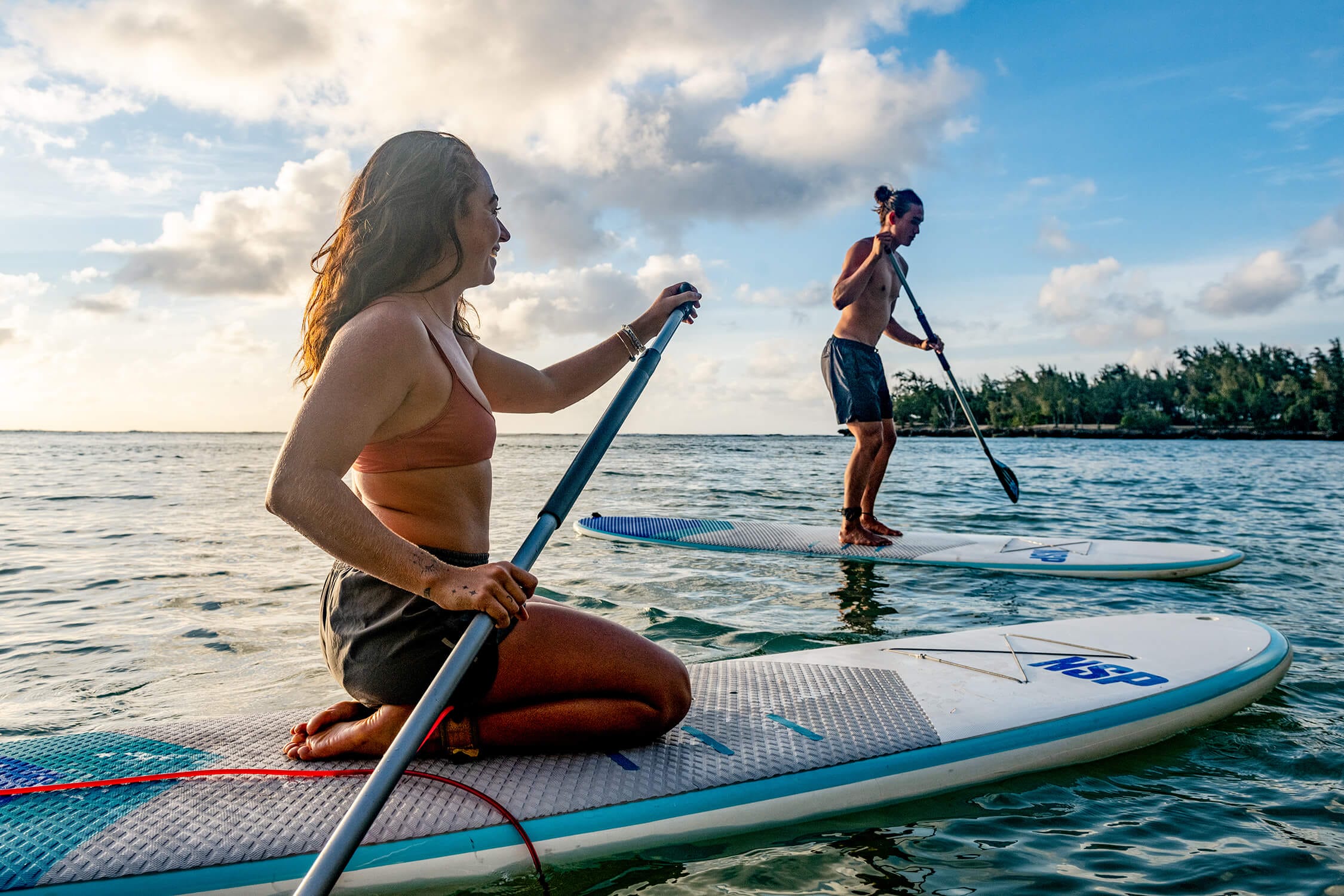As a Honoluluan, the drive up to the North Shore of O‘ahu isn’t one I make often, but it’s always a welcome escape to visit the rugged coastline that’s home to some of the world’s most iconic surf spots and pristine beaches. It takes about an hour from Salt Lake in my blue Forester, give or take. The scenery changes from condominiums, crowded roads, and transit-rail construction to sweeping pineapple fields, giant white windmills, and residential “Keep the Country Country” signs. I turn onto a palm-lined road that leads to Turtle Bay Resort, a five-star luxury oceanfront property that sprawls over 1,300 acres.
In the resort parking lot, I overhear a couple of twentysomething locals in mid-conversation. Clad in slippers and hats, one of them asks, worriedly, “Eh, you sure we’re allowed to be here?” His friend responds with confidence while balancing towels under his arm, “We should be, it’s a public beach.”
He’s right. Thanks to Trust for Public Land’s Kahuku Kawela Forever project, these 5 miles of coast are indefinitely preserved for public use, and I’m here to meet the woman who spearheaded the deal. Lea Hong, state director of TPL Hawai‘i, is waiting for me at the resort’s golf shop, wearing a long-sleeved blue sun shirt, a hat, and walking shoes. Before we embark, she gives me a navy-gray shirt that has a list of successful projects completed by TPL against a backdrop of the Hawaiian Islands: Waiāhole Beach Park, Kīlauea Point National Wildlife Refuge, Hālawa Valley, Hawai‘i Volcanoes National Park, and many, many more.
It’s an age-old tale across Hawai‘i: the bitter conflict over land development between Hawai‘i residents and foreign developers. For three decades, North Shore residents, surfers, and community groups like the Defend O‘ahu Coalition (which sells signs and shirts with the aforementioned “country” slogan) protested fiercely against the resort’s massive plans to build five new hotels, thousands of resort units, and several commercial and shopping centers. As tension rose, TPL entered the fray in 2006 to help negotiate a conservation agreement with the state of Hawai‘i, the City and County of Honolulu, and the landowner. In 2015, TPL was finally able to strike a $45 million deal to preserve 634 acres of the windswept coastline.
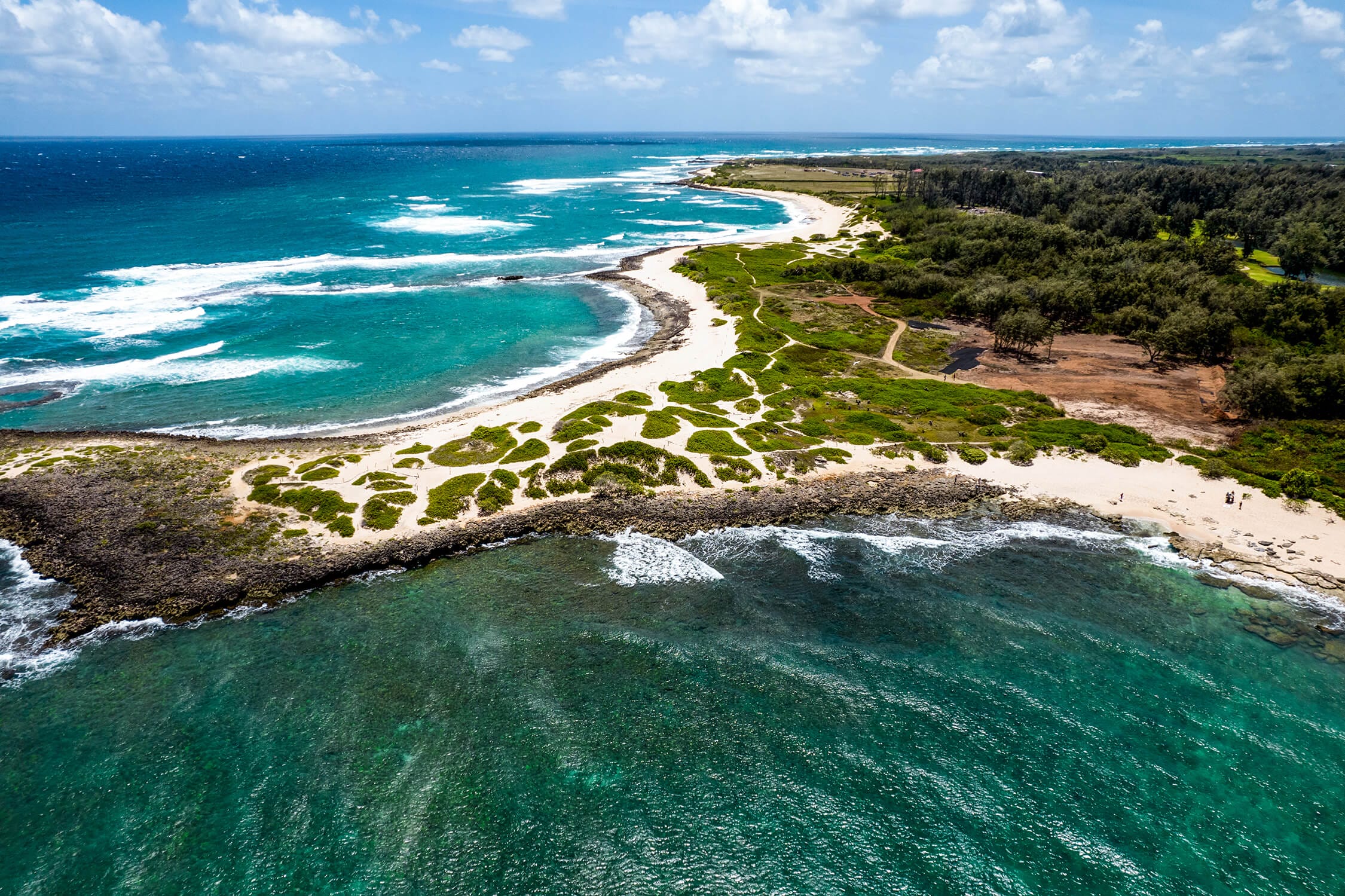
An aerial view of Kahuku Point showcases the North Shore’s remarkable beauty. Photo: Jenny Sathngam
No Speeches, Just Beaches
Kahuku Kawela Forever was one of the nonprofit’s most high-profile cases—and, Hong admits, probably the most stressful. “It was a grueling process with many setbacks, going through three mayors and three governors,” she says. But as a result of her and her colleagues’ perseverance, the resort’s development plans were majorly scaled back, to only two hotels and down to 750 hotel and residential units from the original 3,500. The resort maintains ownership of the land and can use the area for recreation, too—there’s a surf and stand-up paddleboard school led by pro surfer Jamie O’Brien for hotel guests. Meanwhile, the resort is required to provide maintenance, security, and recreational access for the public. That’s why there are up to 80 public parking stalls at the resort lot and, along with beach access, 8 miles of trails open to the public.
“The Kahuku Kawela Forever project was one of the largest in terms of dollars we’ve had in Hawai‘i, and there were many frustrating moments, having to engage in shuttle diplomacy and talk to state and county elected officials to convince them why this deal was a good idea. But it was an incredibly worthy project,” says Hong. “I just remember when it was all finished, the community didn’t want any more speeches. No speeches, just beaches!” she exclaims, laughing.
Hong and I embark on a resort golf cart along marked trails that take us to Kahuku Point through a thick forest by the coast. It’s not crowded at ten o’clock on a weekday morning, but we pass families on bicycles, visitors on Segways, and an elderly couple strolling for their morning exercise. When we make it to Kahuku Point, Hong takes off to look for monk seals. “Is that one?” she asks. “Sometimes you can’t tell a seal from the black rocks.” Waves break against jagged rocks, and white water reflects the early light as we climb up a sandy incline for a better view. Alas, no monk seals, just rough waves. Hong herself is a surfer on the south shore and says you should be experienced if you want to surf here.
Hong, who grew up in Wahiawā, worked for years in environmental law before joining TPL. She says working for TPL has provided her with much more satisfaction than litigation ever could. “There’s a permanence with the work that we do. It’s satisfying knowing that this land is going to be protected forever,” says Hong. “It is an amazing feeling to see families going to the beach, enjoying the hiking trails, and surfing—and to know that will continue.”
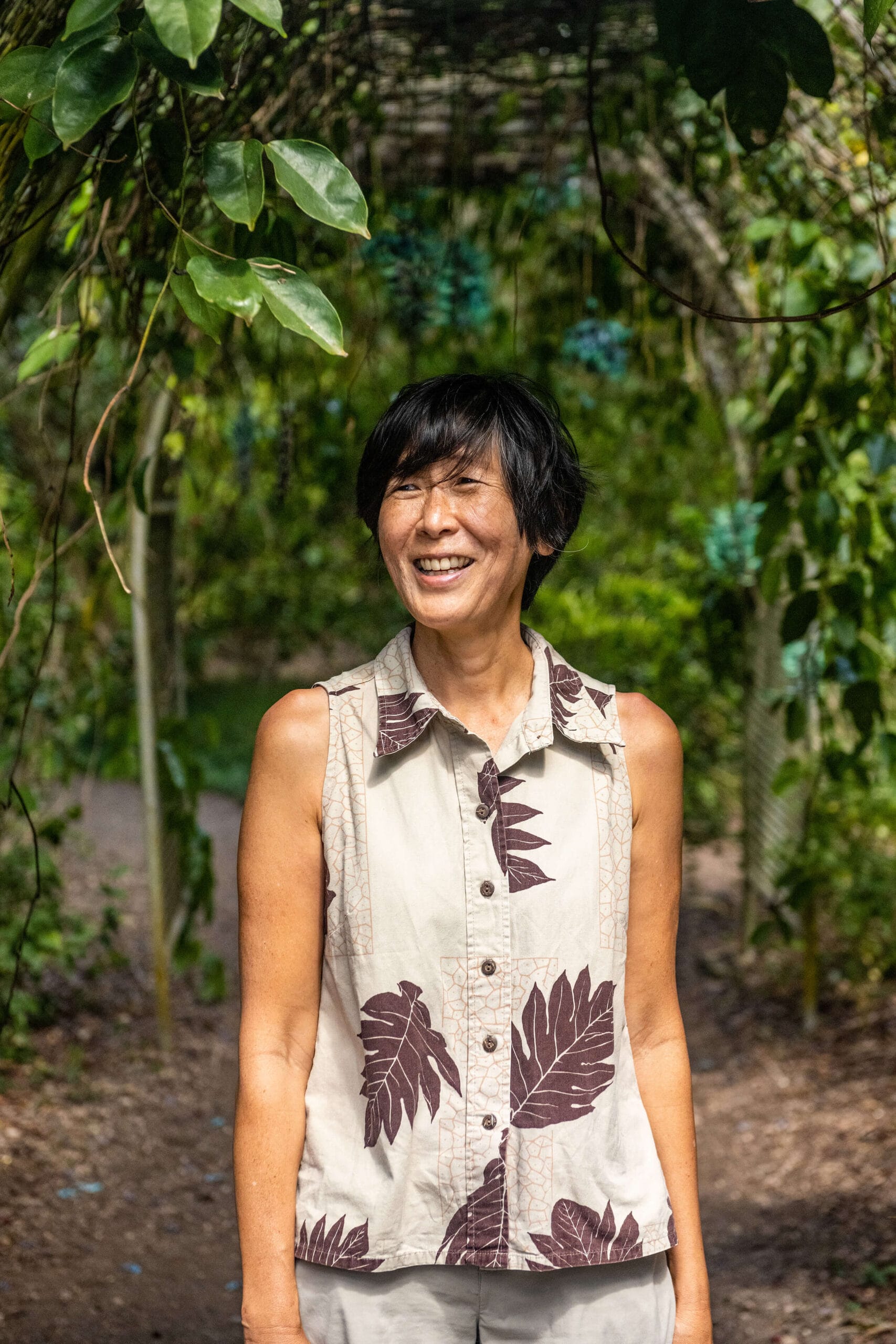
— Lea Hong, TPL Hawai‘i state director
A large black-and-white albatross soars above us as we chat, and she tells me there are nests nearby—one of a few nesting spots on the entire island. Kahuku Point is under stewardship of the North Shore Community Land Trust, which partners with the U.S. Fish and Wildlife Service to restore the coastal dune ecosystem and protect the birds. They’ve tirelessly toiled to remove invasive species, reintroduce and cultivate native species, and trap aggressive predators like mongooses.
As a result of their efforts, the wildlife is flourishing. Visitors and locals can now regularly see (but not touch) rare species such as the Laysan albatross, four endemic and endangered Hawaiian waterbirds, endangered monk seal pups on the beach, and even threatened nesting sea turtles.
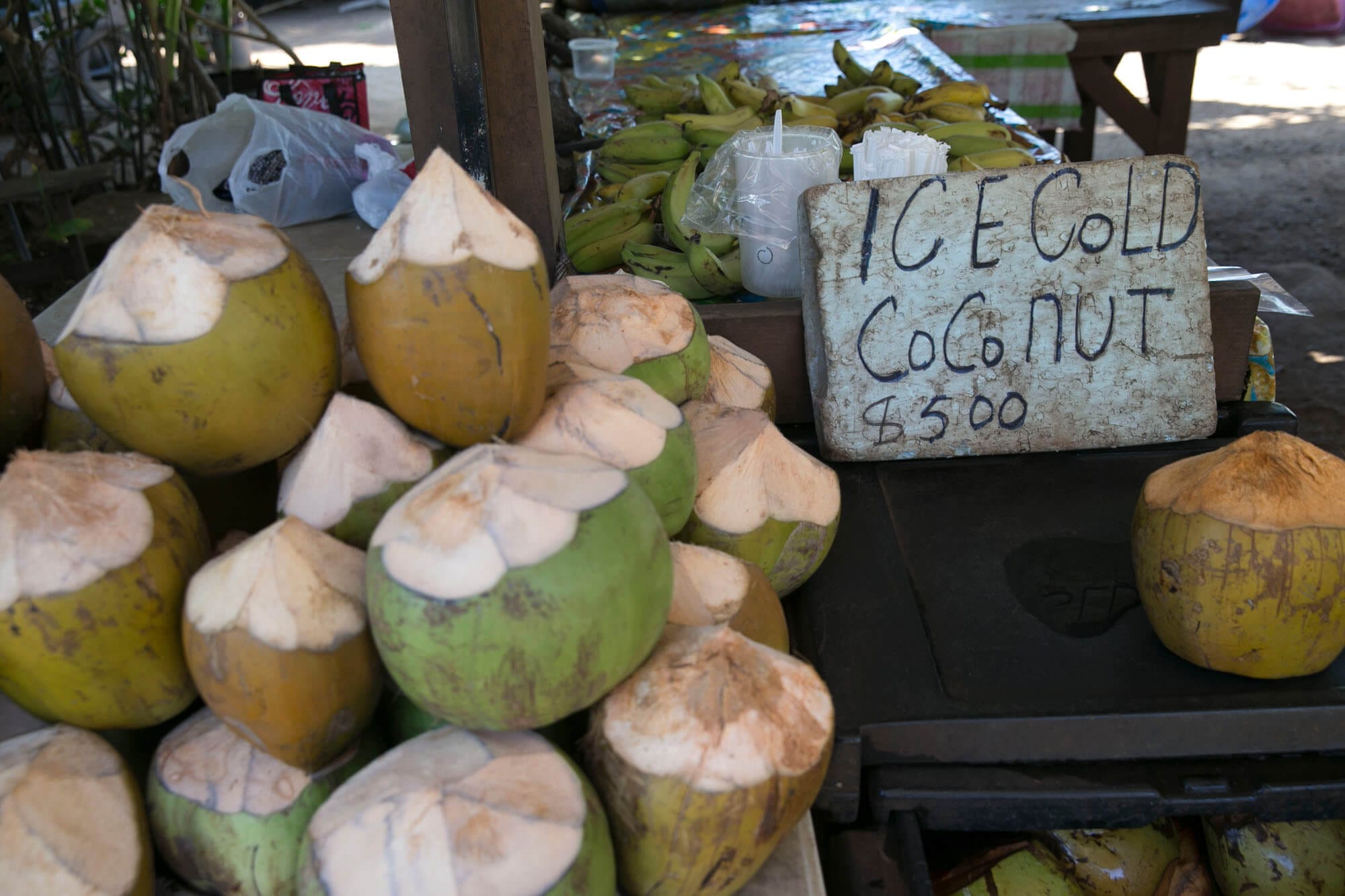
Local produce is available at farmers’ markets near Kawela Bay. Much of it is grown on land preserved by TPL and the North Shore Community Land Trust for dedicated agricultural use. Photo: Marco Garcia
Keeping Country, Country
After a stint on Kamehameha Highway, I park across from farm stands selling corn, bananas, and coconuts. There’s a path here that leads to Kawela Bay—you could also walk one of the trails from the resort, but this is faster. It’s a short three-minute trek from the highway before I emerge onto the glistening, crescent-shaped bay. The water is peaceful, lapping gently onto the shore where a family holds a picnic. A group of pink kayaks are about a mile out in the water, and a couple with surfboards gets ready to paddle out.
The secluded bay is exempt from the towering waves the North Shore is known for. Experienced surfers flock from around the world between November and February to ride the awe-inspiring waves at spots like Sunset Beach, Pipeline, or Rocky Point. Many participate in international competitions such as the Vans Triple Crown of Surfing, the Eddie Aikau Big Wave Invitational, and the Billabong Pro Pipeline. But there’s a plethora of lesser-known surf spots along this stretch of land—if you know, you know. At Kawela Bay, the waves are more ideal for beginners and keiki (children); if you take the time to paddle farther out, you can find more intermediate waves.
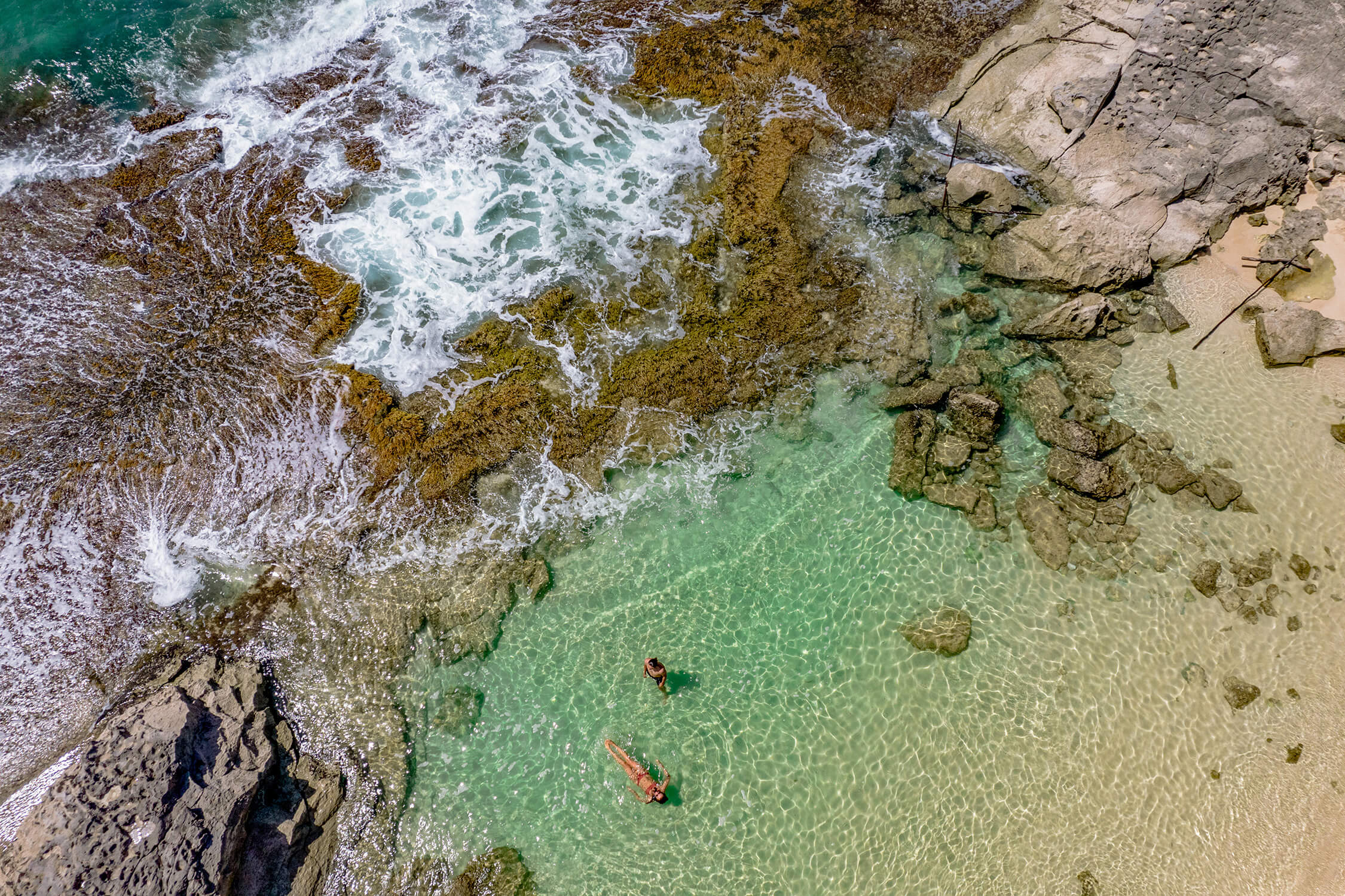
Keiki Pool is just one of many places enjoyed by locals and protected by TPL. Photo: Jenny Sathngam
Or so I hear from Mark Manley, a Kawela Bay surfer and resident since 1958. He was a staunch supporter of the Kahuku Kawela Forever project, knowing his family’s way of life was threatened by the resort’s development plans.
As a child, he played at the bay with friends until sundown, holding summer bonfires on the sand, catching hammerhead sharks, sailing on rafts, and being next-door neighbors with pro surfer Gerry Lopez. “I wanted to be a surfer just like him,” says Manley. When he was 12, his father told him that if he could swim to and back from Kūka‘imanini Island—a small limestone island about 100 feet from Kawela Beach—he could buy a surfboard with his newspaper route money. He completed the challenge, got himself a $35 surfboard, and has been riding the waves ever since.
It wouldn’t have been the same Kawela that we knew as kids. We would have lost some of the soul of Kawela.”
– Mark Manley, Kawela Bay surfer and resident
“With surfing, you’re not always catching waves—you end up . . . waiting around,” Manley explains. “During that time, we [talk] with friends. When we were young, we’d talk about who broke up with who. Now, we talk about how old we’re getting.” He’s grateful to TPL for the work they did to preserve his neighborhood. “I remember thinking back then, if they developed and built all those hotels, we would lose Kawela,” says Manley. “It wouldn’t matter if our family owned a house here or not. It wouldn’t have been the same Kawela that we knew as kids. We would have lost some of the soul of Kawela.”
Today, he still goes out to the bay as often as he can, sometimes up to five times a week. He’s switched his surfboard for stand-up paddleboarding, together with his beloved dog, Snoopy. Although the neighborhood’s changed since he was a kid—“there are lots more rich folk”—he’s able to rest easy knowing that the shore will never be overrun by resorts and hotels.
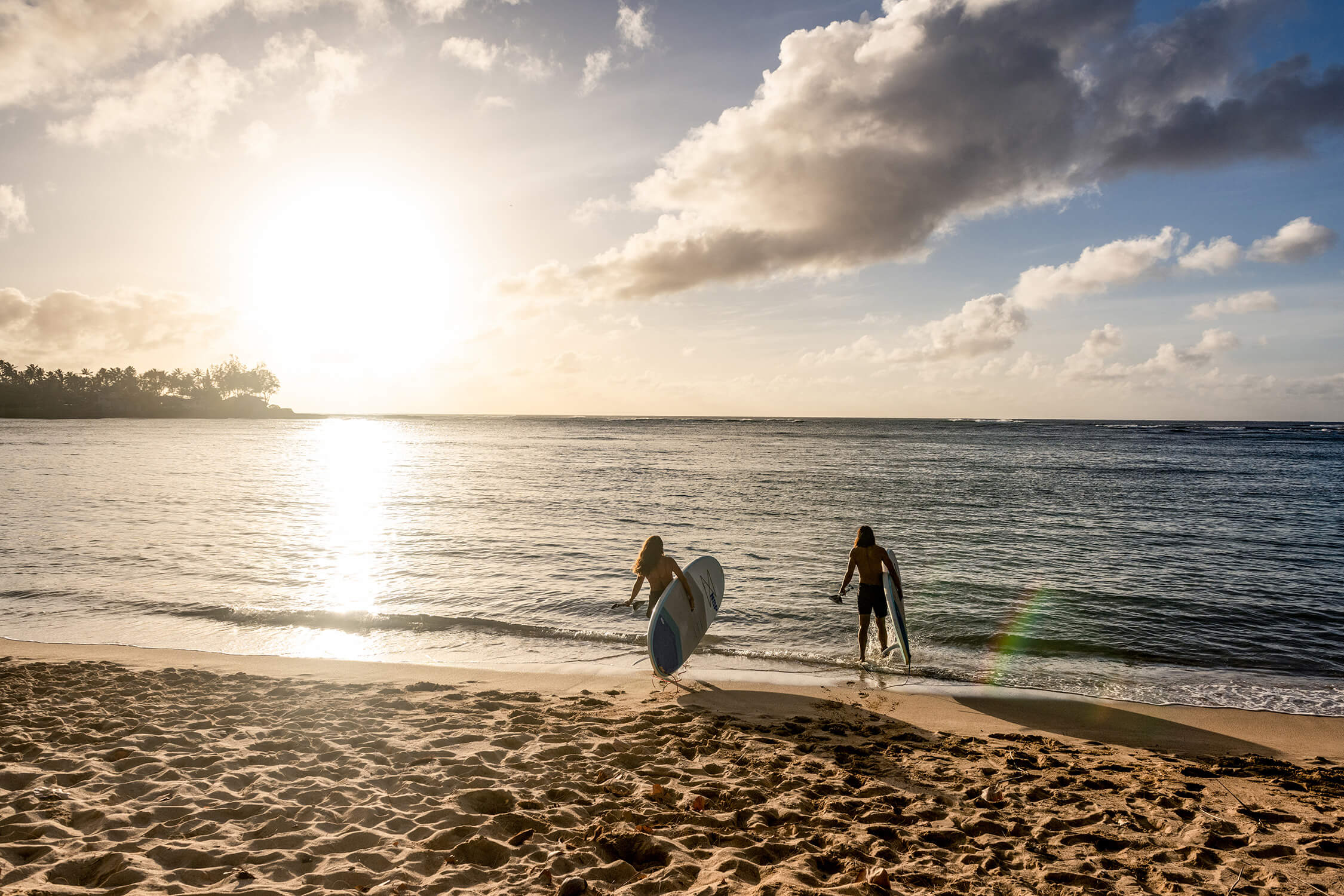
A Symbolic Battle
One friend Manley might be chatting with while waiting for a wave is Doug Cole, one of Hong’s partners during the Kahuku Kawela Forever project. At the time, Cole was the executive director of the North Shore Community Land Trust. He and Hong were in the trenches together for years, attending task force and community meetings, meeting legislators and taking them on visits to the site. Many state and county elected officials had concerns about the cost of the land, especially when much of it wasn’t going to be under direct state or county ownership.
“The point we were trying to make to the legislators was that we’re preserving shoreline and ocean experience along an undeveloped portion of the island,” says Cole. “People can paddle, go [to the] beach, and hike even if we don’t own the land. And that was the hardest hurdle to convince people—it would cost this much for land that they don’t have total ownership [of]. But our point was that we would get all the benefit of owning this land without the burden of needing to manage it. The primary benefit was recreational enjoyment and wildlife preservation.”
It’s clear that for everyone involved, the fight was much bigger than just this particular property on the North Shore. “It was symbolic of the entire state of Hawai‘i having lost so many special places and shorelines,” says Cole, “and how important it was to preserve the places we do have left for the entire island population and beyond to enjoy.”
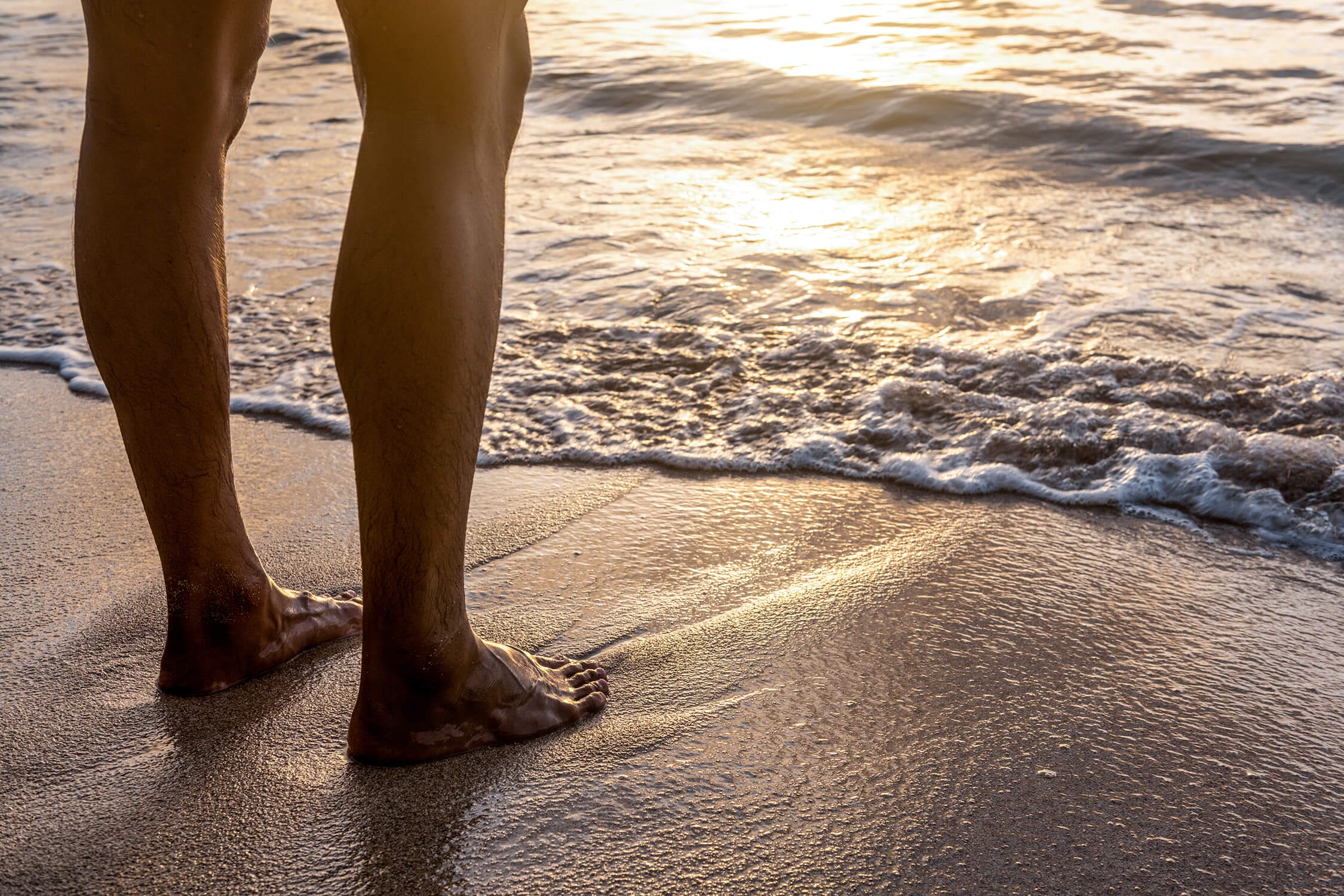
Time spent in nature is known to have a positive impact on mental and physical wellness; access to Kawela Bay provides healthful opportunities for all. Photo: Jenny Sathngam
Cole belongs to a family of surfers: his father, Peter Cole, moved to Hawai‘i from California in 1957 and became a legendary big wave surfer who won the Mākaha International the following year. Peter was well known for his conservation work along the North Shore, and Doug remembers many nights as a child, watching his father return home tired after community meetings. “He was always opposing resort expansion in the ’80s and, some days, he’d come home grumpy,” Doug remembers. “I would say he was a major influence in my life and how I got involved with the project.”
He has fond memories of biking along the trails, surfing at Kawela Bay, and fishing in area ponds. In fact, his first job in high school was handing out towels at the resort pool. He recalls coming across construction along the old trails through Turtle Bay as a teenager and seeing concrete pilings as the resort was preparing to build the new hotels.
“[This project] was symbolic of . . . how important it was to preserve the places we do have left for the entire island population and beyond to enjoy.”
– Doug Cole, former executive director of the North Shore Community Land Trust
His favorite time to surf the bay is before sunset. “It’s not just the waves that you catch and how many waves you catch,” he says. “It’s getting away from work or other stresses in life, the experience of paddling out into the ocean and looking at the beautiful shoreline. We surfers have a real appreciation for our natural environment, and that played a role in the success of the Kahuku Kawela Forever project.”
He adds, “There’s no way we would have succeeded in conserving this land if it weren’t for TPL and Lea Hong in particular. We couldn’t have accomplished this without them. I’m so thankful that I can still experience this place in the way I’ve come to love it, and my kids can do it too, and that gratefulness will extend for generations.”
Maria Kanai is a freelance journalist and editor based in Honolulu. Her writing has appeared in Hana Hou!, the Honolulu Star-Advertiser, HONOLULU Magazine, MidWeek, and more. She was born in Yokohama, Japan, but moved to Hawai‘i a lifetime ago and married a local boy, with whom she now has two kids.

Donate to become a member, and you’ll receive a subscription to Land&People magazine, our biannual publication featuring exclusive, inspiring stories about our work connecting everyone to the outdoors.

